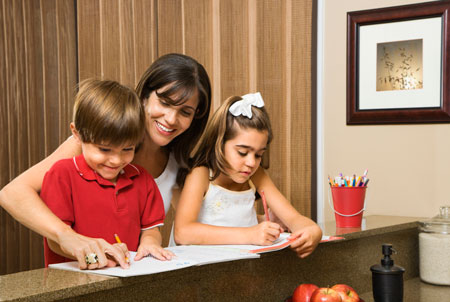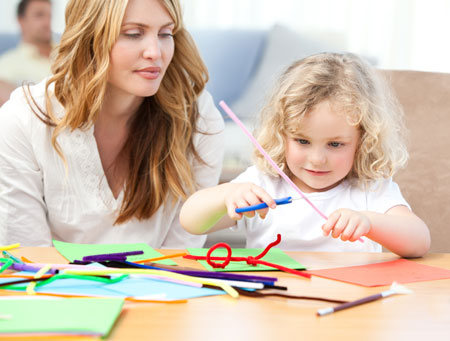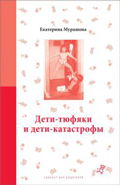1 класс | Образовательные тесты

Решение примеров в пределах 20 с переходом через десяток
Математика 1 класс | Автор: Федотова Елена Олеговна | ID: 12216 | Дата: 11.4.2020

Проверка навыков счёта в пределах 10
Математика 1 класс | Автор: Миргалиева О.Н. | ID: 11980 | Дата: 20.3.2020

Если ответы верно найдешь, то тест непременно отлично прйдешь!
Математика 1 класс | Автор: Шепелева Л.В. | ID: 11981 | Дата: 20.3.2020

Проверить сложение и вычитание в пределах 10
Математика 1 класс | Автор: Миргалиева О.Н. | ID: 11979 | Дата: 2.3.2020

Тест используется для проверки знаний учащихся
Математика 1 класс | Автор: Миргалиева О.Н. | ID: 11825 | Дата: 31.12.2019

Данная работа поможет определить сформированность навыка счёта
Математика 1 класс | Автор: Демьянченко Ольга Алексеевна | ID: 11102 | Дата: 21.10.2019

Математический диктант в пределах 9.
Математика 1 класс | Автор: Хрипунова Надежда Витальевна | ID: 11400 | Дата: 25.8.2019

Отработка табличного сложения и вычитания числа 2.
Математика 1 класс | Автор: Савченко Т.Г. | ID: 11211 | Дата: 11.6.2019

Отработка табличных случаев сложения и вычитания с числом 3.
Математика 1 класс | Автор: Савченко Т.Г. | ID: 11210 | Дата: 11.6.2019

Отработка табличных случаев сложения и вычитания с числом 1.
Математика 1 класс | Автор: Савченко Т.Г. | ID: 11209 | Дата: 11.6.2019
1 класс | Образовательные тесты

Прочитайте задание. Выберите букву. Произнесите слово вслух. Отметьте правильный вариант.
Русский язык 1 класс | Автор: Болилая Галина Львовна | ID: 12350 | Дата: 18.5.2020

Русский язык 1 класс | Автор: Ждырева Л.А., Снадина С.Н. | ID: 12034 | Дата: 2.3.2020

В основы теста положены изученные темы в 1-ом классе.
Русский язык 1 класс | Автор: мишин максим | ID: 11583 | Дата: 18.10.2019

Задания на проверку знаний по написанию сочетаний жи-ши, ча-ща, чу-щу.
Русский язык 1 класс | Автор: Исаева Светлана Борисовна | ID: 11034 | Дата: 21.4.2019

Материал на проверку изученных тем
Русский язык 1 класс | Автор: Исаева Светлана Борисовна | ID: 10942 | Дата: 17.3.2019

Проверка умения характеризовать звуки речи, различатьтвёрдые и мягкие, звонкие и глухие согласные.
Русский язык 1 класс | Автор: Баганова Татьяна Васильевна | ID: 9182 | Дата: 16.2.2017

Повторение «Звуки и буквы»
Русский язык 1 класс | Автор: Кобелева С.В. | ID: 9081 | Дата: 9.1.2017

Тест позволяет проверить умение обучающимися определять количество слогов в словах.
Русский язык 1 класс | Автор: М.Н.Патершук | ID: 8834 | Дата: 25.10.2016

Тест проверяет знания учащихся по теме «Твёрдые и мягкие согласные»
Русский язык 1 класс | Автор: Калинина Татьяна Витальевна | ID: 8583 | Дата: 9.9.2016

Тест проверяет знания первоклассников о звуко-буквенном составе слов. Тест содержит пять вопросов, может использоваться на любов этапе урока (и в любом классе начальной школы).
Русский язык 1 класс | Автор: Алексеева Вера Анатольевна | ID: 8625 | Дата: 4.9.2016
Страница 1 из 6
Подготовка к школе: что должен уметь будущий первоклассник

 (1060 оценок)
(1060 оценок)

Итак, поступающий в школу ребенок должен:
- Уметь назвать себя (полное имя, отчество, фамилия). Уметь полностью назвать маму, папу, бабушку.
- Знать времена года, количество и названия месяцев в году, дней в неделе. Знать, какое сейчас время года, какой сейчас месяц, какой сегодня день. Уметь ответить на вопросы типа «Когда птицы улетают на юг?», «Когда холодно и идет снег?», «В какой день люди отдыхают и не ходят на работу?», «В какое время года листья желтеют и опадают?», «Когда мы собираем грибы и ягоды?» и т.д.
- Уметь прочитать (можно по слогам) небольшой и очень простой текст из нескольких предложений.
- Быть в состоянии написать (или скопировать) простую фразу. Например: «Он ел суп», «Миша мыл окно».
- Уметь складывать и вычитать числа в пределах первого десятка.
- Владеть навыком обобщения по признаку. То есть из предложенных картинок ребенок должен уметь выбрать те, которые что-то объединяет. Например, если предложены картинки с трамваем, колесом, яблоком, кошкой и автобусом, то ребенок должен отложить в сторону трамвай и автобус и сказать, что это — транспорт или средства передвижения, или «на них ездят люди». Если предложен ряд слов: «туфли, сапоги, тапочки», то ребенок должен подобрать слово, которое относится к ним ко всем. В данном случае это слово «обувь».
- Владеть навыком исключения из ряда. Предложен ряд слов: «сыр, масло, пластилин, колбаса». Ребенок должен не только исключить «лишнее» слово «пластилин», но и (главное!) объяснить, почему лишним является именно он. «Пластилин лишний потому, что из него лепят. Он несъедобный. А все остальное — это еда. Ее едят».
- Находить сходство и различия между предметами.
- Что общего между морковкой и картошкой?
- Они оба овощи, их едят, из них варят суп, они растут в земле, у них есть кожура и т.д.
- А чем они отличаются друг от друга?
- Отличаются формой. Морковка такая треугольная, а картошка круглая или овальная. А еще отличаются цветом. Морковка оранжевая, а картошка коричневая.

- Уметь составить рассказ по картинке или по серии картинок. В некоторых школах детям предлагают сначала расположить картинки в нужном порядке, а потом рассказать по ним историю. Рассказ должен быть связным, иметь начало и конец. Очень поощряется хотя бы упоминание об эмоциональном состоянии героев («На этой картинке девочка грустная, потому что у нее улетел шарик», «Мальчик очень обиделся», «Дети обрадовались, что им построили горку» и т.д.)
- Знать основные геометрические фигуры (круг, овал, треугольник, квадрат, прямоугольник) и видеть их сочетания (на этой картинке два треугольника и один квадрат). Уметь их нарисовать.
- Запомнить 5–7 из 10 четко названных простых слов.
- Запомнить и назвать не менее шести из 12 картинок, одновременно продемонстрированных ребенку в течение 30 секунд.
- Уметь по просьбе учителя рассказать наизусть небольшое стихотворение.
- Уметь отвечать на вопросы типа «Что бывает раньше: обед или ужин? Весна или лето?», «Кто больше: корова или коза? Птица или пчела?», «У коровы детеныш — теленок. А у лошади?»
- Знать 10–12 основных цветов.
- Уметь нарисовать фигуру человека со всеми основными частями тела (включая шею, пальцы и т.д.).
В большинстве школ тестирование при поступлении сейчас не проводится. Есть и такие учебные заведения, для которых данный список умений и навыков будет слишком короток или прост. То, что мы перечислили — базовый уровень: если он есть, значит, ребенку в принципе по силам учиться и осваивать программу начальной школы.
Авторская статья
Статья предоставлена издательством «Самокат»
https://www.7ya.ru/Bauskas iela 58A — 7RīgaLV-1004 x
xВам понравилась статья?
Оцените статью
У нас программа тестирования в школе оказалась немного сложнее, т.е. по пунктам все так, совпадают, но сами задания сложнее, например, уметь читать текст в большой абзац и уметь его пересказать, но правда, всех родителей будущих первоклашек предупредили об этом еще после нового года и поэтому было время подготовится. Мы на свои силы не рассчитывали, у нас все взрослые работают от зари- до заката, поэтому сразу же обращались в центр подготовки к школе. Благо, сейчас это не проблема, и образовательных курсов много, поэтому вопрос всегда только в выборе программы и как далеко от дома находятся. Ну, и как мне кажется, автор статьи , упустил момент подготовки психологической к школе, а ведь — это очень важно! Ребенок в садике и требования — одни, а тут школа- новая жизнь, совсем другие требования) Надо уметь слушать, надо уметь подчинятся требованиям учителя, уметь надолго сохранять внимание и концентрацию внимания, все по другому, этому, папа-мама- не научат! Мы специально выбирали курсы чтобы готовили и в этом плане ребенка, как не удивительно в Москве их оказалось не очень много, т.е. приходишь , разговариваешь, с тобой совсем соглашаются, но пропускают как будто мимо ушей… Только в «президентской школе», на мои страхи обратили внимание и поняли про , что я собственно речь веду! Так, что кто из родителей будущих первоклашек согласен со мной о психологической составляющей подготовки к первому классу, можете иметь эти курсы в виду!
2014-04-14, elena korepanovaСчитать до 20 они не должны! Нет такого закона. Обучают на подготовительных курсах до 10. Какое сегодня число- что это? Откуда он может знать,если ему не сказать об этом. Тест для 4 класса. Кто вам нужен,скажите? Это всего лишь дети! Они идут учиться! Очень жаль что вся Россия обучает с помощью интернета. Сами давно не в состоянии составить конспекты и говорить 45 минут в течении урока. Разленились! А от детей требуют непосильное! Отзывы от создателей реклам. Не читайте и не тестируйте по данному тесту. Пусть протестируют минобразование России!
2017-01-26, Миша сУ нас тоже совпали пункты, но только читать не просили. А в спец. школах тестирование гораздо сложнее, по профилю школы. Но детки же обычно занимаются, готовятся, так что для них не составляет труда, если, конечно, у ребенка вообще есть способности к тому профилю, который выбрали для него родители)
2014-04-23, Mama_Makaronaстесняюсь спросить — чему в первом классе будут учить, если дети все это знают и умеют. задолбали бедных детей своими подготовишками, вместо игр сидят учат всякую фигню, а потом соматика прет из всех щелей и начинают таскать по врачам.
2017-04-24, сумасойтиможноВсего 4 отзыва Прочитать все отзывы.
Итоговые тесты для 1 класса по программе
1 вариант
Ф.И.______________________________________________________
1.Посчитай и запиши сколько предложений в третьем абзаце. ___
2.Выпиши из третьего абзаца предложение,состоящее из двух слов.
_____________________________________________________________________________________________________________________________________________________________________
3. Запиши слово — дятел, раздели его на слоги, поставь ударение, определи, сколько в слове согласных и сколько гласных букв.
________________________- гласных б., согласных б.
4. Выбери слово, которое нельзя переносить, подчеркни.
Весна, осень, зима, лето.
5.Выпиши из текста одно слово, которое нельзя переносить.
________________________________________________
6.Запиши слова в алфавитном порядке. Сорока, дятел, ворона
__________________________________________________________
7.Посчитай о скольких птицах говориться в третьем абзаце?
Ответ:_________
8.Придумай устно задачу про птиц, чтобы ответ был равен -8 и решалась она сложением, сделай к задаче схему и реши задачу.
__________________________________________________________________________________________________________________________________________________________________________________________________________________________________________________________________________________________________________________________________________________________________Ответ: _________________________
9. Все птицы в третьем абзаце перелетные или зимующие? Подчеркни ответ.
10.Напиши, почему все рады весне.
_____________________________________________________________________________________________________________________________________________________________________________________________________________________________________________________________
___________________________________________________________________________________
11.Придумай и запиши заглавие к тексту. ___________________________________________________________
2 вариант
Ф.И.______________________________________________________
1.Посчитай и запиши сколько предложений в первом абзаце. ____
2.Выпиши из первого абзаца предложение, состоящее из двух слов.
_____________________________________________________________________________________________________________________________________________________________________
3. Запиши слово — лучик, раздели его на слоги, поставь ударение, определи, сколько в слове согласных и сколько гласных букв.
________________________- гласных б., согласных б.
4. Выбери слово, которое нельзя переносить, подчеркни.
Утро, вечер, день, ночка.
5.Выпиши из текста слово, которое нельзя переносить
________________________________________________
6.Запиши слова в алфавитном порядке. Заяц, белка, ёжик.
__________________________________________________________
7. Посчитай о сколько зверях говориться во втором абзаце?
Ответ:_________
8.Придумай устно задачу про белочку, чтобы ответ был равен 6, чтобы она решалась вычитанием, сделай к задаче схему и реши задачу.
__________________________________________________________________________________________________________________________________________________________________________________________________________________________________________________________________________________________________________________________________________________________________Ответ: _____________________________.
9.Какой зверёк из третьего абзаца спит всю зиму?____________________
10.Напиши, почему все рады весне?
_____________________________________________________________________________________________________________________________________________________________________________________________________________________________________________________________
_______________________________________________________________________________
11.Придумай и запиши заглавие к тексту. ___________________________________________________________
Наступила весна. Пригрело яркое солнце. Снег начал таять. Побежали веселые ручьи. Дни стали длиннее.
Заглянул солнечный лучик в лес. Разбудил спящего ёжика. Потянулся ёж и улыбнулся ласковому лучу. Пощекотал лучик лапки у зайчика. Запрыгал зверёк, захлопал ушами от радости. Белочка выкидывает сырые листья из дупла. Лесные мыши выбрались из норок, греют свои спинки.
Звонко звенит голос синицы. Чирикают веселые воробьи. Важно каркает на суку дерева ворона. Трещит сорока. Стучит по дереву крепким клювом дятел.
Закончились холодные и голодные дни. Природа просыпается от зимнего сна. Все рады приходу весны!
Наступила весна. Пригрело яркое солнце. Снег начал таять. Побежали веселые ручьи. Дни стали длиннее.
Заглянул солнечный лучик в лес. Разбудил спящего ёжика. Потянулся ёж и улыбнулся ласковому лучу. Пощекотал лучик лапки у зайчика. Запрыгал зверёк, захлопал ушами от радости. Белочка выкидывает сырые листья из дупла. Лесные мыши выбрались из норок, греют свои спинки.
Звонко звенит голос синицы. Чирикают веселые воробьи. Важно каркает на суку дерева ворона. Трещит сорока. Стучит по дереву крепким клювом дятел.
Закончились холодные и голодные дни. Природа просыпается от зимнего сна. Все рады приходу весны!
90000 CogAT Test 1st Grade Practice Tests & Samples 90001 90002 Which CogAT Level is Administered to 1st Graders? 90003 90004 The testing level of the CogAT Form 7 corresponds to the student’s age. This means that the CogAT Level 7 is designed for students who are seven-years-old and generally in 1st grade. The CogAT Level 7 is frequently administered to all 1st grade students. 90005 90004 The CogAT 1st grade is used to assess verbal, nonverbal, and quantitative abilities in children, though it focuses very little on verbal abilities.Students are not required to read on the CogAT 1st grade test. The test, comprised of images and figures, is administered by an instructor who reads the instructions aloud to the students. The students then select an answer from the answer choices, also comprised of images, for each question. In the optional Sentence Completion section, the sentence is read aloud by the instructor (in addition to the instructions) and the students select an image from the answer choices. Audio instructions are now available on TestPrep-Online for this section.This optional section is available in Spanish, making the CogAT useful for those students who do not speak English natively. 90005 90004 The questions on the CogAT Level 7 evaluate how well these students employ their reasoning skills to solve problems they have not yet learned, as the material covered on the CogAT 1st grade test reflects material not yet covered in their academic careers. However, the questions are developmentally suitable level of 1st grade students. 90005 90002 Test Format and Content 90003 90004 The three batteries on the CogAT Level 7 (the Verbal Battery, the Quantitative Battery, and the Nonverbal Battery) are made up of a total of 136 questions.The batteries may be administered together or separately. This may vary by school or administering instructor. Each battery is further broken into three subtests. See the complete breakdown of the test in the table below: 90005 90002 CogAT Form 7 Batteries 90003 90016 90017 90018 90019 Battery 90020 90019 Subtests 90020 90023 90024 90025 90018 90027 Verbal 90028 90029 Picture / Verbal Analogies * 90028 90023 90018 90029 Sentence Completion 90028 90023 90018 90029 Picture / Verbal Classification * 90028 90023 90018 90027 Quantitative 90028 90029 Number Analogies 90028 90023 90018 90029 Number Series 90028 90023 90018 90029 Number Puzzles 90028 90023 90018 90027 Nonverbal 90028 90029 Figure Matrices 90028 90023 90018 90029 Figure Classification 90028 90023 90018 90029 Paper Folding 90028 90023 90068 90069 90004 * Primary levels (5 / 6-8) contain Picture Analogies and Picture Classification.Higher levels contain Verbal Analogies and Verbal Classification. 90005 90002 How to Prepare for the CogAT 90003 90004 Make sure your child is prepared for the CogAT Level 7 with the help of TestPrep-Online. With our practice materials, your child is sure to succeed. Check out our CogAT practice tests. 90005 90004 There are many ways that students can study for a test. The most important thing is to start with enough time. Studying too much in one or two days can be a risky, and you may forget some of the tricks you learn within all the information you would be receiving.Between two to three weeks should suffice to go over all the questions, explanations, and simulations at a comfortable pace. 90005 90004 The CogAT practice pack features questions belonging to all the batteries, and in particular all of the sub-tests. Your child can start by solving the full-length simulation of the test. If they fail one of the questions, a detailed explanation and solution is available for them to learn the proper reasoning behind the question. After your child has seen a few examples of the questions, they will be able to reproduce the logic used and answer each of the questions with confidence.90005 90004 All the tests in the practice pack can be retaken so there is no rush to finish the questions fast. Your child should take their time with each explanation, and understand what are the key elements to obtain to succeed the day of the test. 90005 90004 Some of the skills required to solve the questions in particular batteries may demand more time to master. This is a very personal issue and because of this, we recommend that the preparation be done in a comfortable, stress-free manner.If your child is stuck trying to solve a question, perhaps it is best if they move to a different topic, or take a small break, and then approach the question once again. 90005 90004 Allowing your child time to rest is just as important as going through all the questions. Some of the sub-tests may be more challenging if they have not been seen before. Our explanations also include the most intuitive way to solve the question, but perhaps your child has another solution with which they are most comfortable.90005 90004 Some children prefer longer study sessions with longer breaks and others may refer shorter study lessons with shorter break, such as 30-minute sessions with 5-minute breaks. Another good strategy could be to try and learn as much as possible during the first week of preparation, and let the information sink in during the weekend with very short study sessions. At the beginning of the second week of preparations, your child can compare their progress and you can reassess the preparation based on the progress.90005 90002 Are You a Teacher? 90003 90004 TestPrep-Online offers exclusive group deals & discounts! Learn more. 90005 90004 90005 90004 The CCAT, CogAT, and other trademarks are the property of their respective trademark holders. None of the trademark holders are affiliated with TestPrep-Online or this website. 90005 .90000 CogAT Test 1st Grade Sample Questions 90001 90002 Similar to the Kindergarten CogAT, the first grade CogAT also assesses students ‘developing comprehension and reasoning skills, critical thinking skills, quantitative reasoning and ability to detect relationships between figures and images. Although a first grade student will encounter similar questions to that of a kindergartener, the content is slightly more advanced. In some cases, a 1st grade student will have developed the fine motor and visual-spatial reasoning skills needed to use the bubble sheet.TestingMom.com members receive access to free bubble sheets, so if you join you can assess whether your child is confident enough to use the bubble sheet come test day. Below are several CogAT sample questions that are intended for the 1st grade level. Each practice question will reflect a specific subtest that your child will come across. 90003 90002 100 Free Gifted Practice Questions 90003 90006 1.) Quantitative Battery: Number Puzzles (Form 7 and 8) 90007 90002 In this number puzzle subtest, children are shown 2 trains.Each must be pulling the same number of red «boxes». The child must identify which train should replace the train (s) with a question mark so that the train to the left of the chain is pulling the same number of red boxes as the train to the right of the chain. 90003 90002 Look at the example below. Do you see how the first train is pulling two cars with 9 red boxes? Now look at the second train. It is pulling one car with 0 red boxes. We need to add another car where the question mark is so this train will be pulling the same number of red boxes as the first train.Which car should we add so the second train will be pulling 9 red boxes? 90003 90002 90003 90006 2.) Non-Verbal Battery: Figure Classification 90007 90002 In the figure classification subtest, the student is shown two rows of figures. The top figures are alike in some way. The student must choose one figure from the bottom row that goes with the top figures in the same way that the figures on top go together. 90003 90002 Look at the shapes on top. They are alike in some way and so they belong together.Choose one shape from the bottom row that belongs with the figures on top. 90003 90002 90003 90006 3.) Verbal Battery: Verbal Analogy 90007 90002 For the verbal Analogies subtest, the child is shown a pair of items on top that are related to each other in some way. The child must determine how they are related. Then, the child must choose a picture from the possible answers that will have the same relationship with the picture on the bottom left. 90003 90002 Look t the two pictures on top. They go together in some way.Now look at the picture in the bottom box, and then look at the answer choices. Do you see a picture among the answer choices that goes with the picture on the bottom the same way the pictures on top go together? 90003 90002 90003 90006 4.) Quantitative Battery: Number Series 90007 90002 In the number series subtest, the child is shown an abacus with one rod missing. The child needs to review the first five rods and look for a pattern or rule. Then the child should choose the sixth rod that would continue to pattern or follow the rule in the sixth place.90003 90002 Look at the example below. This is an abacus. The beads in the first 5 rods form a pattern or follow a rule. The beads in the sixth rod are missing. Can you choose the rod that goes in the sixth place that would complete the pattern or follow the rule? 90003 90002 90003 90006 5.) Non-Verbal Battery: 90007 90002 In the paper Folding subtest, the child sees a series of pictures that show a piece of paper being folded. Then, one or more holes are punched into the paper. The child must choose the answer that shows what the paper will look like when it is unfolded.90003 90002 Parent say to your child: Take a look at the pictures across the top. They show a piece of square being folded. Then, one or more holes are punched in the folded piece of paper. Can you point to the answer that shows what the square piece of paper will look like when it is unfolded. 90003 90002 90003 90002 90047 Answers: 90048 90003 90002 1.) The correct answer is option number 3 (with 9 red boxes). 90003 90002 2.) The correct answer is option 3 (always has a middle black square; 3 squares are black).90003 90002 3.) The correct answer is option 2 (the fan). 90003 90002 4.) The answer is option 3 (a rule of each number repeating twice: 4,4,1,1,5 90057, 5) 90058. 90003 90002 5.) The correct answer is option 2. 90061 90003 90002 100 Free Gifted Practice Questions 90003.90000 Free NNAT Practice Test | 1st Grade 90001 90002 The NNAT3, NNAT-2 and Naglieri Nonverbal Ability Test test (NNAT test first grade) are a great test for kids who are visually-spatially oriented. That’s because the test relies on shapes and figures to test students ‘reasoning ability, as opposed to verbal-based tests which tend to lean more heavily on language. If your child is not astute with nonverbal matters, you’ll need to really prepare them for the NNAT3 test since those skills will come into play.Even if your child is strong with visual-spatial materials, it’s important to get them ready for the test since it’s tough and can be competitive. Here’s one sample question from the test: 90003 90002 90005 90006 90003 90008 90009 90010 Background: 90011 First, a little background: the NNAT test for first grade is often used as a marker for gifted and talented (G & T) admissions. Some districts, like New York City, use it in conjunction with another test to measure students ‘readiness for an advanced program.Other districts use the test as the sole measurement tool. Either way, if your child will be taking the test you’ll need to spend some time making sure they’re ready. 90012 90009 90010 Skills and format: 90011 First and foremost, your child will need to be familiar with the skills that will be measured on the exam and the format of the test. The best way to accomplish this is to use practice questions and other practice materials that mirror the questions your child will see on test day. 90012 90009 90010 Levels and subtests: 90011 When assembling practice questions for your child, keep in mind that children taking the NNAT test for the first grade will be given Level B questions, which include the subtests of pattern completion, reasoning by analogy, and serial reasoning.90012 90021 90002 Here are a few practice questions to give you an idea of the kind of practice material your child should look at. 90003 90002 100 Free Gifted Practice Questions 90003 90002 Below is a sample question for 90010 Pattern Completion 90011: 90003 90002 (Answer: B — completes the pattern) 90003 90002 Below is a sample question for 90010 Reasoning by Analogy 90011: 90003 90002 90003 90002 ( Answer: A — right side is mirror image of left side) 90003 90002 Below is a sample question for 90010 Serial Reasoning 90011: 90003 90002 90003 90002 (Answer: D — each shape appears twice in the pattern — the outer shape of the 2 90047 nd 90048 shape on the bottom row) 90003 90002 90010 What should I do after my child takes the test? 90011 90003 90002 Once your child is done taking the NNAT test for first grade, relax! The hardest part is over.When your child leaves the test room, take them to do something fun — go to a movie or get some ice cream. Do not ask your child how they did on the test. They’ll tell you they did fine, and you do not want to stress them out. Ask your school district when you can expect to get scores back, and what you need to do once that day comes. You’ll want to have your ducks in a row in case admissions deadlines fall shortly after the test scores come back. 90003 90002 90057 Learn more about the NNAT3 test: 90058 90003 90002 100 Free Gifted Practice Questions 90003.90000 NNAT Test 1st Grade Sample Questions 90001 90002 NNAT Test 1st Grade Sample Questions (Level B) 90003 90004 The NNAT (Naglieri Nonverbal Ability Test) is a nonverbal test that is used to qualify kindergarten through 12th grade students for gifted and talented programs. The NNAT uses a nonverbal model for assessing students, as it utilizes shapes and figures to evaluate a student’s problem solving abilities. Similar to the OLSAT, the NNAT does not test a child on what he or she has learned in school, but instead, focuses on visual-spatial reasoning skills.The NNAT has become a popular test for admissions into gifted and talented programs, as it is used across various school districts throughout the United States. The most recent version of the NNAT is the NNAT3 which includes 48 questions that are broken down into four distinct question types. These question types include: 90005 90006 90007 Pattern completion 90008 90007 Reasoning by analogy 90008 90007 Serial reasoning 90008 90007 Spatial visualization 90008 90015 90004 Children who are in the first grade will be assigned to the Level B exam of the NNAT.During this exam, students will come across «pattern completion», «reasoning by analogy» and «serial reasoning» questions. Serial reasoning is a category of questions that students completing «Level A» have not yet come across. Serial reasoning requires that students recognize sequences that are created by shapes and figures. These sequences change visually to form logical patterns that the student must solve for. These questions require that the student identify relationships between two or more images.From there, they must apply the same rules to the consecutive items. Below are several NNAT sample questions that are intended for the 1st grade level. Each practice question will reflect a specific category of questions that your child will come across. 90005 90004 100 Free Gifted Practice Questions 90005 90020 1.) Pattern Completion 90021 90004 Parent say to your child: Look at the pattern on top. A piece has been taken out of it. Choose the piece below the pattern that goes where the question mark in order to complete the pattern.When your child takes the NNAT, very little verbal explanation is given to them to explain how to solve the «puzzle» Instead, the child must look at the problem itself for visual cues as to how it should be solved. 90005 90004 90005 90020 2.) Reasoning by Analogy 90021 90004 Parent say to your child: Look at the figures on top. They go together in some way. Choose a figure from the answer row that goes with the figure (s) on the bottom the same way the figures on top go together. 90005 90004 90005 90020 3.) Serial Reasoning 90021 90004 Parent say to your child: Look at the shapes in the boxes across the rows and up and down the columns. Do you see how they are related to each other? Can you find the answer that goes in the empty box so the designs inside the rows and columns follow a pattern? 90005 90004 90005 90020 4.) Serial Reasoning 90021 90004 Parent say to your child: Look at the shapes in the boxes across the rows and up and down the columns. Do you see how they are related to each other? Can you find the answer that goes in the empty box so the designs inside the rows and columns follow a pattern? 90005 90004 90005 90020 5.) Pattern Completion 90021 90004 Parent say to your child: Look at the pattern on top. A piece has been taken out of it. Choose the piece below the pattern that goes where the question mark in order to complete the pattern. When your child takes the NNAT, very little verbal explanation is given to them to explain how to solve the «puzzle» Instead, the child must look at the problem itself for visual cues as to how it should be solved. 90005 90004 90005 90004 90051 Answers: 90052 90005 90004 1.) B 90055 2.) D — Each heart is a different color. 90055 3.) A — the 3 shapes alternate in each row. Each row has its own color. 90055 4.) B — the 3 shapes alternate in each row. Each column has its shade of the same color. 90055 5.) C 90055 90005 90004 100 Free Gifted Practice Questions 90005.